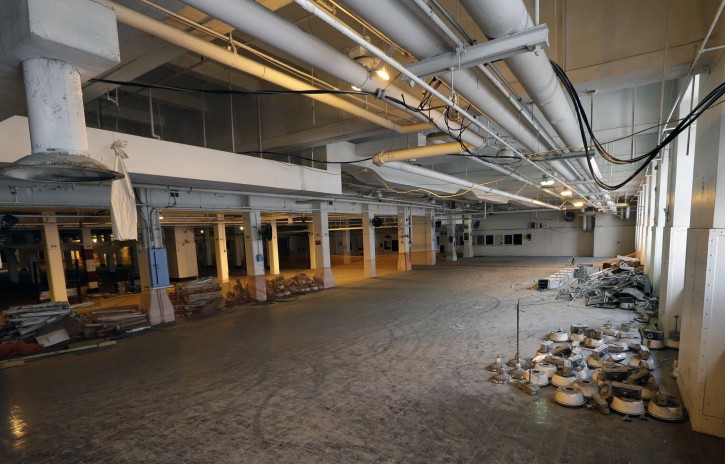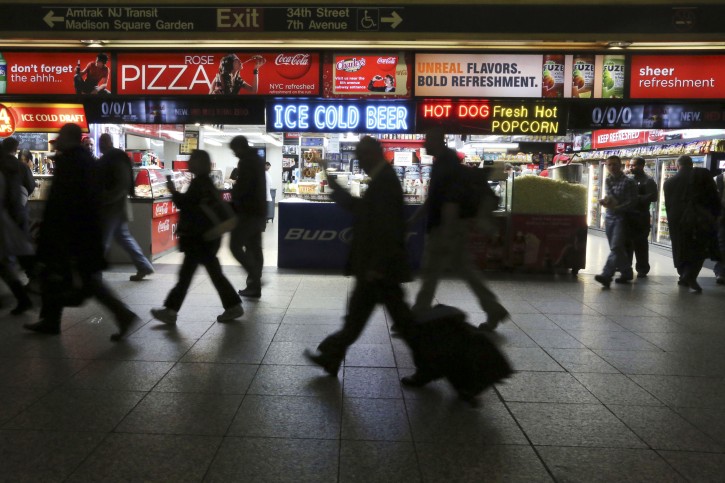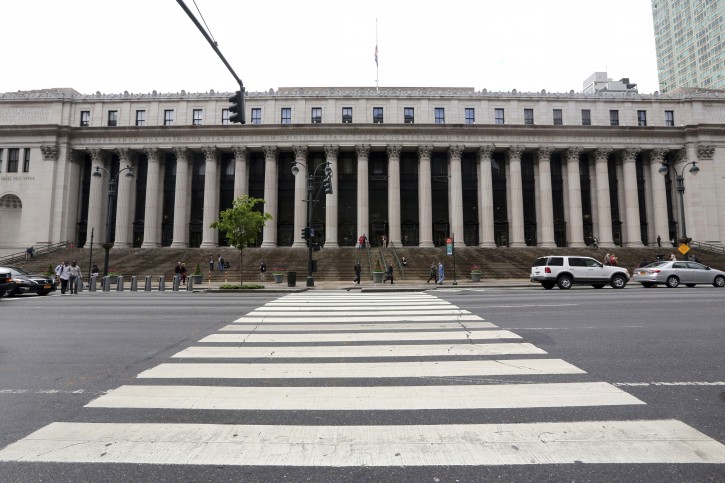 New York – The busiest passenger train station in the United States is a 1960s-era, utilitarian labyrinth in the basement of a basketball arena.
New York – The busiest passenger train station in the United States is a 1960s-era, utilitarian labyrinth in the basement of a basketball arena.
Subscribe to our Daily Roundup Email
Pennsylvania Station, a gateway to the nation’s biggest city, was designed to accommodate about 200,000 riders a day. Now, it is packed with more than 600,000. At rush hours, it resembles a human demolition derby. All it takes to strand hundreds of thousands of people is a glitch on one of only two tracks linking Manhattan to New Jersey under the Hudson River. Suddenly, common areas become overwhelmed with impatient commuters packed into dim, low-ceilinged spaces, waiting and waiting.
“Penn Station is a disaster,” said Vin Cipolla, president of the Municipal Art Society that helped save Manhattan’s now-glorious Grand Central Terminal from demolition.
Two decades after ambitious plans were unveiled to improve Penn Station while expanding it into the massive Beaux Arts post office building across the street, there are few visible signs of change. The multibillion-dollar effort is mired in perpetual bickering among movers and shakers in politics, finance, sports and business.
Ironically, the original Penn Station built a century ago as a Beaux Arts masterpiece, modeled after the monuments of ancient Rome, once rivaled Grand Central for its soaring beauty, classical columns and natural light. It was torn down in 1963 and replaced with the current, smaller Penn Station, notable for its blandness — topped with the familiar, circular Madison Square Garden, among the first buildings of its kind to be built above the platforms of an active railroad station.
Now, a coalition of civic advocates and political leaders is trying to get things moving to overhaul Penn Station by latching on to what they say is a key development: The 50-year-old city permit to operate Madison Square Garden expired in January.

The Department of City Planning is recommending that the City Council renew the special permit for the self-proclaimed “World’s Most Famous Arena” for only 15 years, rather than “in perpetuity,” as requested by the Madison Square Garden Co.
Two civic groups, the Regional Plan Association and Municipal Art Society, say the dingy, cramped and aging basement station can expand and modernize only if the Garden moves, along with its supporting columns that reach down to the train level.
Owners of the Garden, home to the NBA’s Knicks and NHL’s Rangers, have recently invested about $1 billion to gut and refurbish one of the city’s most successful entertainment venues.
Kim Kerns, a spokeswoman for the Madison Square Garden Co., said the arena “meets all required findings for this permit” and noted the Garden helps drive the city’s economy by supporting about 6,000 jobs.
A decision on the permit is expected within two months.
For now, New Jersey Transit, the Long Island Rail Road and Amtrak have hired a design firm to bring some light and fresher air into Penn Station. Changes could include better exits and entrances, improved access to platforms and taxi stands and new signage.
That’s little comfort to passengers walking through smothering, windowless corridors under low-hanging old pipes and wire clusters, filled with fast-food odors.
“I would do anything not to use this station,” said Carole Ryavec, a Manhattan filmmaker. “The force of bodies is overwhelming. It’s a crush. It’s a mass of people — most of whom know where they’re going and counting down the seconds to their train — and nothing is going to get in their way.”

The truth is, no matter what changes are made, real relief will come only when additional tracks are built across the Hudson. Plans for two new tunnels were killed in 2010 by New Jersey Gov. Chris Christie, who cited austerity amid the recession.
The other hope for expanding Penn Station rests with Amtrak — if it could start moving some of its operations across Eighth Avenue into the 1.4-million-square-foot post office building. The 1914 landmark known officially as the James A. Farley building is now nearly empty, except for the postal customer service area. More than 70,000 square feet of space is available to lease for events ranging from fashion shows to automobile expos.
“Future home of Moynihan Station” reads a billboard that has sat for years on the main entrance staircase, heralding long-stagnant promises for a massive Amtrak main terminal, with ticketing and waiting areas, plus retail shops. The new station would be named after Daniel Patrick Moynihan, the late New York senator who envisioned it.
That would free up 100,000 square feet at Penn Station, giving passengers more space, according to the Moynihan Station Development Corp., a New York state agency that paid $200 million to acquire the post office building.
Renderings released by the Port Authority of New York and New Jersey, which is overseeing the project, show the old post office redone with soaring ceilings and skylights.
Construction is under way on the $325 million first phase of the project — including a wide new commuter concourse under the front end of the post office that’s to open in 2016. It will ease access to bare, gritty platforms for Amtrak, NJ Transit and Long Island Rail Road.
But there’s no commercial tenant yet for non-transit areas of the Farley building expected to contribute hundreds of millions of dollars toward completion of the Moynihan Station project, whose final cost could top $1 billion.
“I just don’t see a realistic plan on the table,” said Steve Spinola, president of the Real Estate Board of New York. “It’ll take a miracle.”
What happens now remains an unanswered question.
“Penn Station clearly is not the first-class facility one would expect in New York,” said Kathy Wylde, president and CEO of the Partnership for New York City, a nonprofit organization of the city’s business leaders. “We’re all embarrassed about it, but at this point, it’s a matter of financial resources.”

It is a disgrace,that America is behind all of the civilized world in mass transportation Look at Japan and Europe they have the most up to date transportation
we cant afford this! as a penn station commuter, I know the crush and crunch that comes at rush hour. However- we need to tighten our belts and not spend money on skylights and fancy murals.
To #5 - I agree with you about Robert Moses. He hated mass transit. Also, although he was Jewish, until his dying day, he never identified himself as a Jew. Because of him, the NYC subways were never extended by tunnel, until the bay, to Staten Island. The latter plan was discussed, by Moses had it terminated. To #3- I disagree with your reasoning pertaining to the excellent rail service in Europe and Japan. In the USA, the airlines wiped out the passenger rail industry. Whenever there is an attempt to have high speed passenger rail service in the USA, to serve certain areas, many groups start screaming “it is too costly”. In Europe and Japan, the citizenry demands excellent rail service, and hence, the best passenger rail service is found there. Incidentally, can someone explain why a rail link which would have connected Penn Station to Grand Central Station, was never built?
It wasn’t just Moses; it was also the big car companies. They strangled proposed mass transit improvements from the end of WW2 until they ran out of money to do so. Not only were they behind stopping improvements, they encouraged the ripping up of transit that already was in place! Elevated subway lines were ripped out of the Bronx and upper Manhattan and Los Angeles had amazing public transit in the Red Line that was specially targeted for destruction by GM.